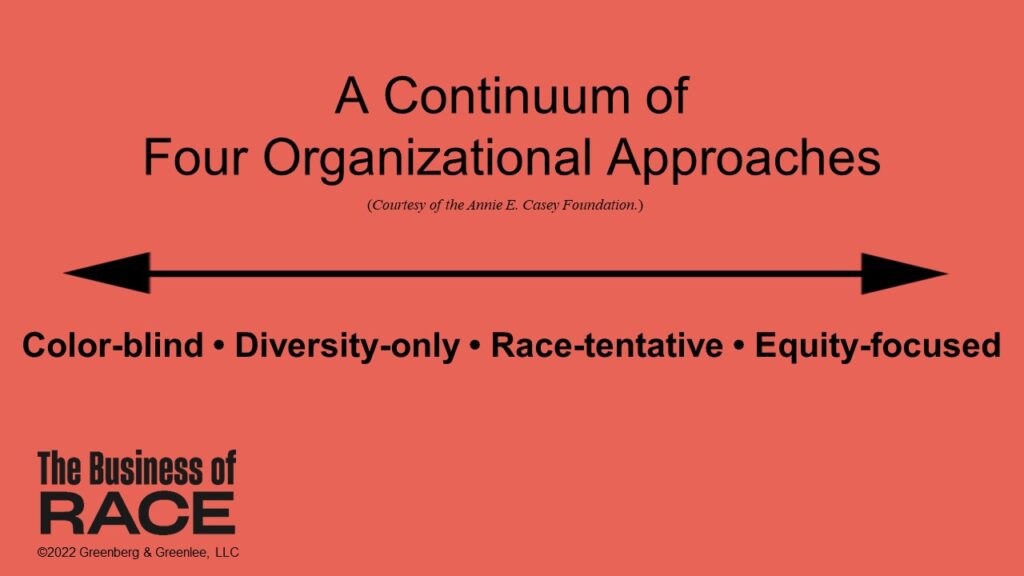Is Your Company Race-tentative?

Earlier this month we were invited by premier conference sponsor Prudential to lead two Business of Race workshops at the Women President Organization’s (WPO) 25th Annual Conference in Montreal. We shared with business owners our organizational development (OD) approach to workplace racial equity and engaged in a rich discussion. Many of these entrepreneurs are well into the journey of embedding racial equity into business policies and practices; some are looking to partner with their clients and members of the community while others are getting started.
Are You Ready?

Readiness for change is a core muscle individuals must flex or build as part of their own race journey. Organizations must do the same. Assessing organizational readiness to start, reimagine or evolve your company’s race work can serve as a guidepost for your next steps.
Look at the Annie E. Casey Foundation’s “Race Matters: Organizational Self-Assessment” (OSA) report. The OSA is free and one that leaders in your organization can take. If you are a sole contributor, we also encourage you to participate – use your voice to influence your company’s strategy.
This 29-statement assessment gauges the current state of your company’s readiness based on a continuum of four organizational approaches:

What does color-blind look like from an organizational perspective? A color-blind organization avoids or shuts down conversations about race, and believes it will only create unmanageable discord. A diversity-only organization proposes universal strategies that are presumed to work for all employees. A characteristic of a race-tentative organization is one in which employees or management have gone through antiracism or unconscious bias training, but the organization is still unclear about what to do next. Lastly, an organization that has taken an equity-focused approach has put measures in place for management accountability.
How to Use the OSA
- Give as prework before bringing a business unit, senior team, or board together for a virtual or in-person meeting. Remember to set context. Have the most senior person in the meeting explain why the group is doing this.
- Using a skilled facilitator, go through each section of the four approaches (color-blind, diversity-only, race-tentative, and equity-focused) and discuss how each person scored the organization.
- Most likely, people will see things differently. Get curious and find out why.
- Identify where the greatest opportunity for progress can be made by looking at the assessment’s statements that were not checked.
- Assign accountabilities and agree to follow up on progress at least quarterly.
Individuals do not come to race work from the same starting place. Neither do organizations. Benchmark where your organization is today and then repeat this process annually to measure progress toward goals.

